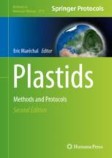Search
Search Results
-
Grazing exclusion increases soil organic C through microbial necromass of root-derived C as traced by 13C labelling photosynthate
Grasslands store large amounts of C; however, the underlying mechanisms of soil C sequestration after grazing exclusion are not well known. This...

-
13C labelling reveals details of the soybean (Glycine max (L.) Merrill) seedling metabolic network
Seedlings depend upon seed reserves for the prevision of carbon skeletons for growth and energy production. Post-germinative growth of soybean is...

-
Mycorrhiza-feeding soil invertebrates in two coniferous forests traced with 13C labelling
Mycorrhizal fungi represent a potentially abundant carbon resource for soil animals, but their role in soil food webs remains poorly understood. To...

-
Novel guard cell sink characteristics revealed by a multi-species/cell-types meta-analysis of 13C-labelling experiments
The tricarboxylic acid (TCA) cycle is an important metabolic pathway to underpin stomatal movements, given that respiration is thought to be the main...

-
Root-derived C distribution drives N transport and transformation after 13C and 15 N labelling on paddy and upland soils
Carbon (C) and nitrogen (N) coupling regulated by intensified microbial activity and turnover in the rhizosphere hotspots are essential for balancing...

-
Whole-crown 13C-pulse labelling in a sub-arctic woodland to target canopy-specific carbon fluxes
Key messageWhole-crown 13 C-pulse labelling can target tree canopy C fluxes in regions with dense understorey cover and investigate how increased...

-
Substrate control of sulphur utilisation and microbial stoichiometry in soil: Results of 13C, 15N, 14C, and 35S quad labelling
Global plant sulphur (S) deficiency is increasing because of a reduction in sulphate-based fertiliser application combined with continuous S...

-
Defoliation modifies the impact of drought on the transfer of recent plant-assimilated carbon to soil and arbuscular mycorrhizal fungi
AimsThe allocation of recent plant photosynthates to soil via arbuscular mycorrhizal (AM) fungi is a critical process driving multiple ecosystem...

-
Bacterial necromass determines the response of mineral-associated organic matter to elevated CO2
Microorganisms regulate soil organic matter (SOM) formation through accumulation and decomposition of microbial necromass, which is directly and...

-
The effect of the 13C abundance of soil microbial DNA on identifying labelled fractions after ultracentrifugation
AbstractDNA-based stable isotope probing (DNA-SIP) technology has been widely employed to trace microbes assimilating target substrates. However, the...

-
Water limitation intensity shifts carbon allocation dynamics in Scots pine mesocosms
Background and aimsTree species worldwide suffer from extended periods of water limitation. These conditions not only affect the growth and vitality...

-
Monitoring of Lipid Fluxes Between Host and Plastid-Bearing Apicomplexan Parasites
Apicomplexan parasites are unicellular eukaryotes responsible for major human diseases such as malaria and toxoplasmosis, which cause massive social...
-
Nitrogen fertilisation reduces the contribution of root-derived carbon to mineral-associated organic matter formation at low and high defoliation frequencies in a grassland soil
Background and aimsRhizodeposition is organic matter released by living plant roots that can be transformed by microbes into particulate organic...

-
Carbon flux through photosynthesis and central carbon metabolism show distinct patterns between algae, C3 and C4 plants
Photosynthesis-related pathways are regarded as a promising avenue for crop improvement. Whilst empirical studies have shown that photosynthetic...

-
Drought and interspecific competition increase belowground carbon allocation for nitrogen acquisition in monocultures and mixtures of Trifolium repens and Lolium perenne
PurposeBelowground carbon (C) allocation for nitrogen (N) acquisition plays a crucial role in determining primary productivity and plant...

-
CH4 transport in wetland plants under controlled environmental conditions – separating the impacts of phenology from environmental variables
Background and AimsMethane (CH 4 ) fluxes at peatland plant surfaces are net results of transport of soil-produced CH 4 and within-plant CH 4 production...

-
Temporary growth cessation of wheat roots following defoliation
Background and aimsDefoliation triggers the remobilisation of root reserves to generate new leaves which can affect root growth until the shoot...

-
Phytate metabolism is mediated by microbial cross-feeding in the gut microbiota
Dietary intake of phytate has various reported health benefits. Previous work showed that the gut microbiota can convert phytate to short-chain fatty...

-
An optimization method for untargeted MS-based isotopic tracing investigations of metabolism
IntroductionStable isotope tracer studies are increasingly applied to explore metabolism from the detailed analysis of tracer incorporation into...

-
Labelling halophilic Archaea using 13C and 15N stable isotopes: a potential tool to investigate haloarchaea consumption by metazoans
The use of stable isotope (SI) labelling and tracing of live diets is currently considered one of the most comprehensive tools to detect their uptake...

